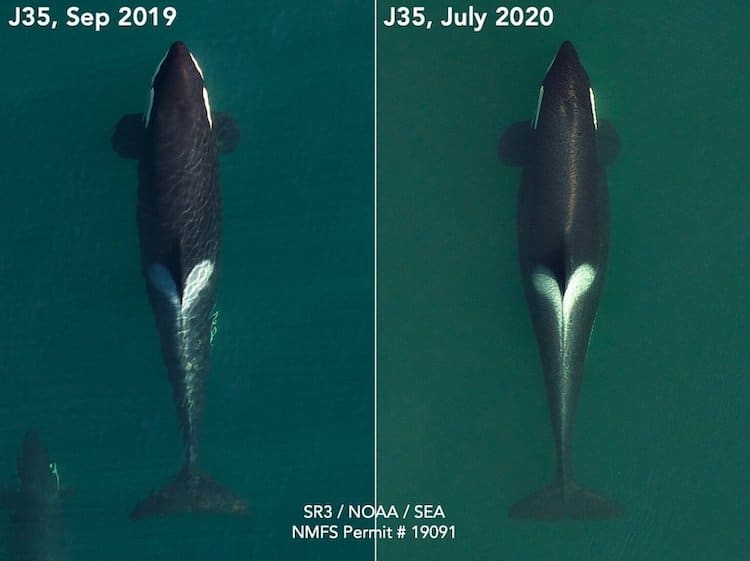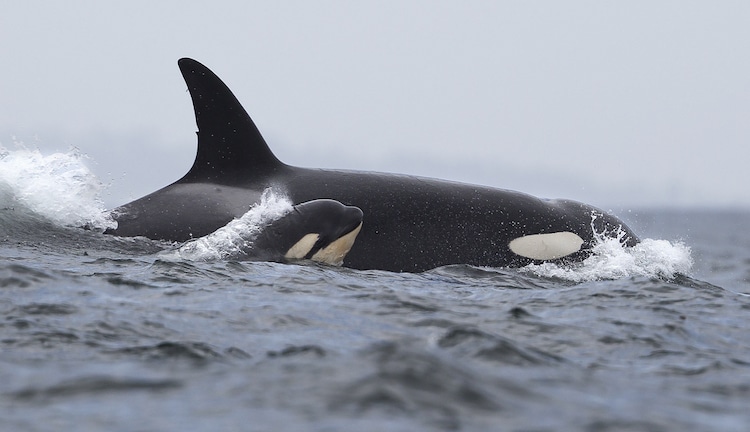Aerial image of Tahlequah showing the development of her pregnancy.
She carried her child on her back for 17 daysa gesture that tugged at heartstrings around the globe.
But now, there is some good news.

Aerial image of Tahlequah showing the development of her pregnancy. (Photo: SR3 and NOAA’s Southwest Fisheries Science Center in 2019 / SR3 and SEA in 2020)
Tahlequah is pregnant once again.
Scientists are cautiously optimistic that this time Tahlequah, also known at J35, will get her happy ending.
In fact, two-thirds of orca pregnancies don’t have a successful outcome.

Killer whale and calf swimming in Monterey Bay, California (Photo:Stock Photosfrom Chase Dekker/Shutterstock)
Researchers believe that poor nutrition is contributing to the rise in stillbirths.
Part of the issue is that killer whales feed exclusively on Chinook salmon.
Researchers have alsofoundthat stress from hunger may also be a reason for poor reproduction.
Once the calves are born, they are bonded as a family for life and join the pod permanently.